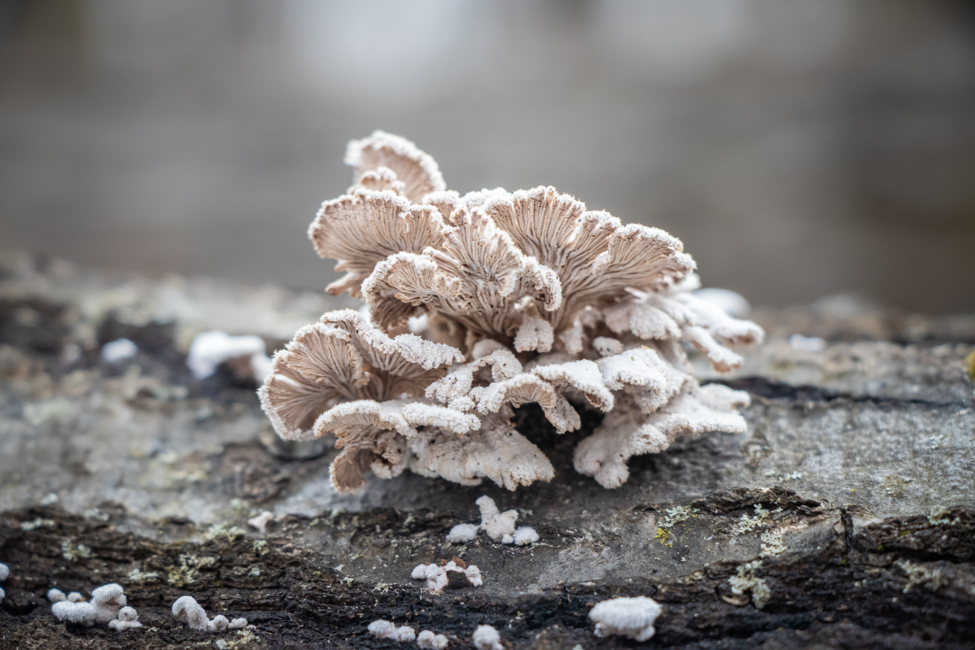The last several years have seen a resurgence in the practice of wild food foraging, as individuals have begun to resurrect traditional methods of procuring sustenance from their ambient surroundings. While culinary institutions have recently popularized foraged plant resources, many individuals are now seeking to minimize their carbon footprint by implementing a natural approach to food, favoring local and organic ingredients over store-bought varieties.
Justin Nolan, Associate professor at the University of Arkansas’ Department of Anthropology, believes food gathering is intellectually and physiologically rewarding. Foraging for plants requires cursory knowledge of one’s natural environment. Despite the rising interest in foraging, many individuals lack the wherewithal required to obtain wild plant foods. Although Nolan encourages human communities to embrace the trend, he also reminds individuals to conduct enough research before consuming wild plants or animals.
Early Hunter Gatherer Populations
Foraging has been the mainstay for human food procurement for thousands of years, as nomadic hunter-gatherer populations utilized various strategies to obtain nourishment. Having developed essential understandings of plant life and their natural environments, these populations of earlier humans located and gathered nuts, fruits, tubers, berries, leafy greens and wild vegetables, often in ways that optimized their efforts in exchange for the nutrients provided by these staples.
With the rise of agriculture roughly 10,000 years ago, early human civilizations eventually domesticated plants and animals, even despite the negative health effects of restricting food intake to a limited number of high-calorie starchy cereal crops. Nonetheless, foraging is very much alive and well today, as most societies retain some knowledge of consumable plant foods and medicines available in the wild.
Modern Food Foraging
Justin Nolan explains that the term foraging is not only reserved for wild fruits, berries, nuts, and greens but also small animals such as gastropods. He believes that taking the time to forage wild edibles not only offers a wide range of essential nutrients and health benefits but also provides individuals with a new perspective and deeper appreciation of the foods they can access and consume.
Watercress
Although a colder climate may limit foraging options, watercress or Nasturtium officinale remains an annual staple across North America and further afield. Although watercress is native to Europe and Asia, it is relatively widespread throughout parts of the United States and Southern Canada. Gathered for hundreds of years, this aquatic plant typically thrives in shallow, alkaline water and flowers from April through October.
Watercress is commonly found along stream margins and river edges, where it forms dense mats of small round leaves that can grow anywhere from four to ten inches high. Watercress is best consumed fresh; however, can remain indefinitely in water if changed daily.
As a member of the Brassicaceae or mustard family, the leaves offer a pungent, peppery taste, and individuals often use watercress as a salad base. Justin Nolan states that the stems are also sources of vitamin C, K, and Omega-3.
Wild Rosehips
While most berries will not grow during the winter months, the Rosaceae family of hedgerow plants can survive relatively cold climates. The rose belongs to a genus of over 150 species of deciduous and evergreen shrubs. For thousands of years, roses have played an essential role in medicine, healing, and perfumery.
The best time to harvest is directly following a frost, and although roses typically bloom in July, rosehips will ripen in the late summer or early fall. Justin recommends seeking out the Rose canina – a product of the common wild rose as they are rich in flavor and easy to locate. Once the rosehips have matured, they are easy to collect but be sure to remove the tiny hairs which surround the seeds as they can irritate the throat.
Rosehips provide a significant source of vitamin C and exceptionally high in antioxidants. Rosehips are also used as a preventative measure against osteoarthritis and various gastrointestinal ailments.
Hawthorn Berries
Hawthorn berries belong to the Crataegus genus, and like rosehips, are a member of the Rosaceae family. Native to Europe and Asia, characteristics will vary depending on location; however, leaves are typically oval-shaped and lobe into three sections. The flowers produce five white petals, which surround the numerous stamens in the center.
According to Justin Nolan, individuals are most likely to find hawthorn berries in deciduous woodlands, where they ripen through September and October. Made up of various natural compounds, minerals, and micronutrients, these berries offer a wide range of health advantages. Historically, hawthorn berries have been recommended to treat high blood pressure as they help to relax constricted blood vessels.
Ultimately, with a predominantly tangy flavor and mild sweetness, hawthorn berries can easily be incorporated into the diet via teas or jellies.
Beech Nuts
Beech nuts Fagus sylvatica are not nearly as common to forage as they can be challenging to harvest. Found in small burrs that fall from the trees in the fall, they belong to the same family as the oak and chestnut, and are found primarily in damp, heavy soils and hedges. Beech nuts have a spiky exterior, and a husk that opens when ripe revealing two irregular shaped nuts. The offer a mild, nut like taste and are commonly used for oils due to their high fat content.
Historically used in folk medicine, beech nuts have been used in many healing rituals, and are believed to be a remedy for minor ailments such as skin irritations. Justin Nolan cautions foragers that beech nuts should not be consumed in large quantities, for they contain saponin glycoside which can lead to gastric issues when eaten raw.
Justin M. Nolan understands the intricacies of foraging wild food sources. He believes that individuals who equip themselves with the necessary knowledge beforehand can discover a wide range of healthful effects by engaging with the natural world in a purposeful way. Gathering wild foods is ultimately a proactive strategy for strengthening connections with the natural environment and developing greater understandings of local ecosystems.




